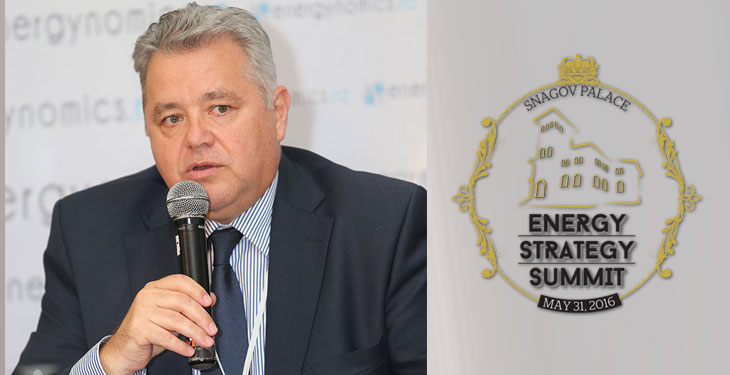In an intervention during the Energy Strategy Summit 2016, the President of ANRE Niculae Havrileţ offered an answer to one of the perennial questions from the general public: how is it that the producer prices have decreased sharply in recent years, but this phenomenon is not reflected in the bill paid by the final consumer. The explanations of the ANRE President show that tariffs for distribution have decreased considerably from 2007 to 2016, ie by 33% to 25 euros per MWh. Meanwhile, the final bill is burden by the support schemes for renewable energy (10 euro) and cogeneration bonus (4 euro), and also the costs with the system services. In short, “if there wouldn’t be any support for the renewable energy and the cogeneration bonus, the price declin would be more significant in the bills”.
The ANRE President Niculae Havrileţ, at the 2016 Energy Strategy Summit
There are many new elements. In 2007, the tariff for distribution was 37 euros, while the amount of energy transported through the energy systems was significant higher than at present. In 2015, in December, so, basically, for 2016, a tariff of 25 euros [MWh] was established, a decrease of 33% from 2007 to 2016. Nota bene: now the amount of energy transported is much smaller, and a lower volume means higher costs, while the cost with the network maintenance is fixed, no matter how much the consumption is. So, in reality, the decline [of the distribution tariff] is even bigger. Basically, the distribution tariff decreased enormously!
Sure, many say that this is not enough, because the price of energy has become 35% of the final price, the rest being network charges and subsidies. We do not take into account that from the 240 lei, which was the price of energy at the producer, in 2012, it is now 150-160 lei, and it will probably decrease further, from the 1st of July. The Central European model shows prices slightly above 20 euros – 20 euros in Germany, 21 euros in the Czech Republic, 21 euros in Slovakia. Romania coupled its day ahead market with those in the Czech Republic and Slovakia, which allows the prices in the region to propagate in Romania. But this is compensated by the 42 lei, so 10 euros, support for the green certificates market, and the 18 lei bonus for cogeneration, ie an additional 4 euros. Basically, an additional 14 euros. Although the prices dropped from 240 lei to 170 lei, we have to add this subsidies. The system services we pay to the security suppliers during the winter, especially to the producers of energy from coal, are also added. Basically, if it weren’t for the support for renewable energy and the cogeneration bonus, the deline in prices would be more significant [in the bills].
In respect with the transmission tariff, this represents about 7% of the invoice, so no matter how much we intervene on this tariff, the impact upon the bill would not be significant. On the other hand, we must bear in mind that both Transelectrica and Transgaz are listed companies for which predictibility and stability are extremely important. In addition, we are talking about two strategic companies with interconnection role, that provide much more than the mere transmission of electricity or natural gas.
On the other hand, within the public space the fact that [these companies] would record more or less gain than they would be required, than it should be appropriate for a company operating as a regulated monopoly, can come as a discordant note. But, there are also elements more difficult to explain. For example, Transgaz managed to recover some old costs, which have been recognized because they had the right to request them. Well, now theese historical costs materialize in a so-called profit, in nice financial figures. In fact, they recovered some of the old debts which there will be no more next year.
